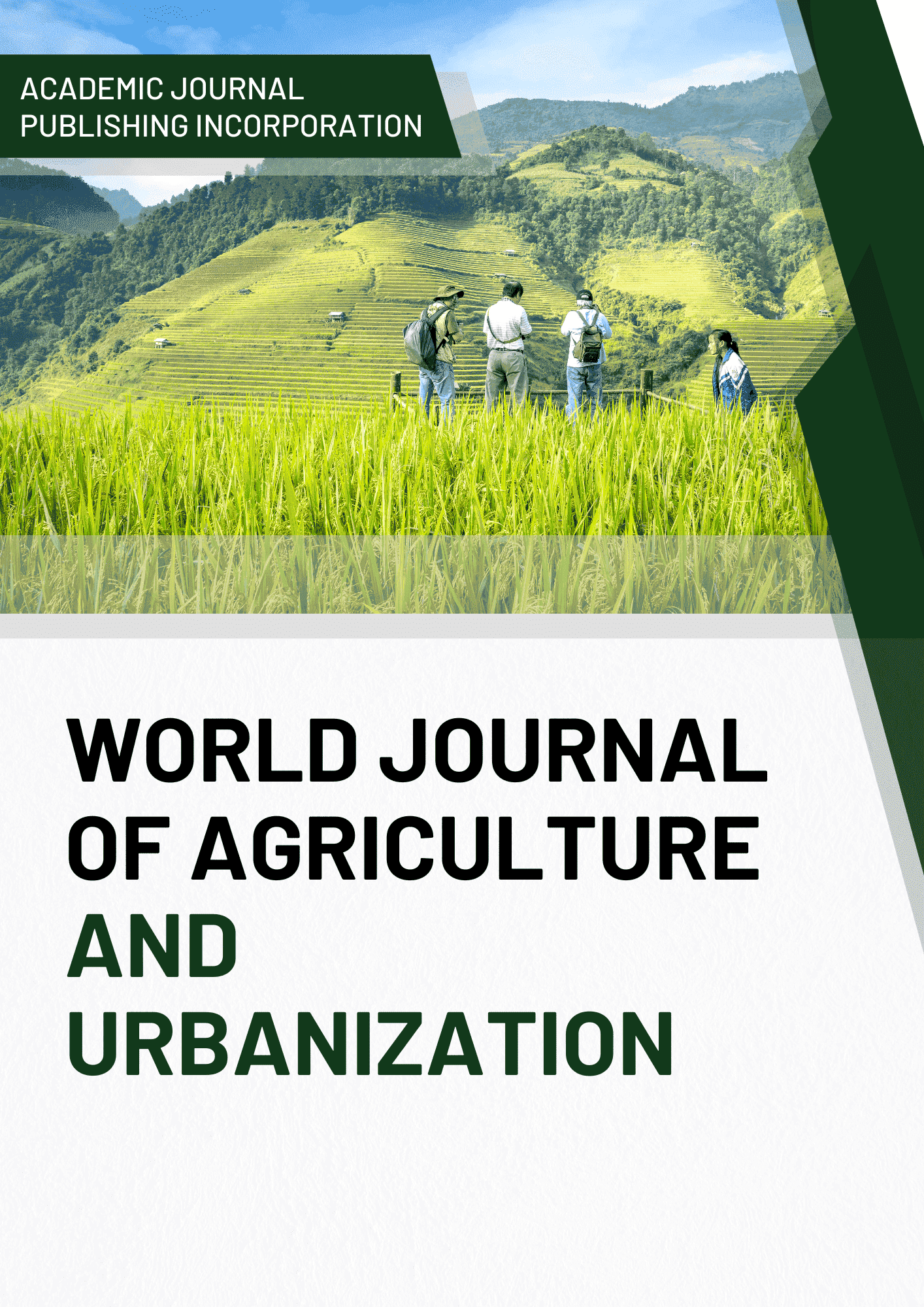Agriculture in United States
DOI:
https://doi.org/10.51699/wjau.v3i1.144Keywords:
agriculture, farming, American agricultureAbstract
Agriculture is a major industry in the United States. It plays a central role in meeting consumer and business market demand. The US is the world acknowledged leader in the science of agriculture and plays a pivotal role in meeting global food challenges. The US is the leading exporter of food in the world. It produces most of the crops in different regions of the country. US farmers and food producers are well positioned to capture an increasing share of the growing world market for agricultural products. Americans spend less on food, as a proportion of their income, than any other nation on the planet. This paper provides an introduction to American agriculture.
References
“Why is agriculture important? benefits and its role,” July 2022, https://online.maryville.edu/blog/why-is-agriculture-important/
“Geography of agriculture,” Unknown Source.
R. Brock, “Top 10 most profitable crops for farming in the USA,” January 2021, https://sguru.org/most-profitable-crops-farming-usa/
G. Oridsh, A. W. Gray, and W. D. Rasmussen, “Origins of agriculture,” Encyclopedia Britannica, December 2023.
“Mapping the most valuable agricultural commodity in each US state,” https://vividmaps.com/mapping-the-most-valuable-agricultural-commodity-in-each-u-s-state/
“Agriculture in the United States,” Wikipedia, the free encyclopedia, https://en.wikipedia.org/wiki/Agriculture_in_the_United_States
“A tapestry of corn,” https://hvfarmhub.org/a-tapestry-of-corn/
“2 Simple maps that reveal how American agriculture actually works,” December 2017, https://www.huffpost.com/entry/largest-crop-each-state_n_6488930
“United States of America – Agriculture,” https://www.nationsencyclopedia.com/Americas/United-States-AGRICULTURE.html
“U.S. agriculture innovation strategy: A directional vision for research,” https://www.usda.gov/sites/default/files/documents/AIS.508-01.06.2021.pdf
“Climate change impacts on agriculture and food supply,” https://www.epa.gov/climateimpacts/climate-change-impacts-agriculture-and-food-supply
“Agriculture,” Wikipedia, the free encyclopedia, https://en.wikipedia.org/wiki/Agriculture
“Women farmers own half the farmland in America but don't earn half the profits,” May 2019, https://givingcompass.org/article/women-farmers-own-half-the-farmland-in-america-but-dont-earn-half-the-profits
“The economic contribution of America’s farmers and the importance of agricultural exports,” September 2013, https://www.jec.senate.gov/public/_cache/files/266a0bf3-5142-4545-b806-ef9fd78b9c2f/jec-agriculture-report.pdf
K. O. Fuglie, Productivity Growth in US Agriculture. US Department of Agriculture, Economic Research Service, 2007.
D. E. Albrecht and S. H. Murdock, Sociology of US Agriculture: An Ecological Perspective. Iowa State University Press, 1990.
M. M. Bell, Farming For Us All: Practical Agriculture and the Cultivation of Sustainability. Penn State Press, 2010.
National Research Council, The Future Role of Pesticides in US agriculture. National Academies Press, 2000.
C. H. Danhof, Change in Agriculture: The Northern United States, 1820-1870. Harvard University Press, 1969.
I. Vogeler, The Myth of the Family Farm: Agribusiness Dominance of US Agriculture. CRC Press, 2019.
R. E. Just, and R. D. Pope (eds.), A Comprehensive Assessment of The Role of Risk in US Agriculture. Springer Science & Business Media, 2013.
B. K. Obach, Organic Struggle: The Movement for Sustainable Agriculture in the United States. MIT Press, 2015.
B. L. Gardner, American Agriculture in the Twentieth Century: How It Flourished And What It Cost. Harvard University Press, 2009.
J. L. Kaufman and M. Bailkey, Farming Inside Cities: Entrepreneurial Urban Agriculture in the United States. Cambridge, MA: Lincoln Institute of Land Policy, 2000.
P. W. Bidwell and J. I. Falconer, History of Agriculture in the Northern United States, 1620-1860. Carnegie Institution of Washington, 1925.
Downloads
Published
How to Cite
Issue
Section
License

This work is licensed under a Creative Commons Attribution 4.0 International License.
The work simultaneously licensed under a Creative Commons Attribution 4.0 International License
You are free to:
- Share — copy and redistribute the material in any medium or format
- Adapt — remix, transform, and build upon the material for any purpose, even commercially.
The licensor cannot revoke these freedoms as long as you follow the license terms.
Under the following terms:
-
Attribution — You must give appropriate credit, provide a link to the license, and indicate if changes were made. You may do so in any reasonable manner, but not in any way that suggests the licensor endorses you or your use.
- No additional restrictions — You may not apply legal terms or technological measures that legally restrict others from doing anything the license permits.








